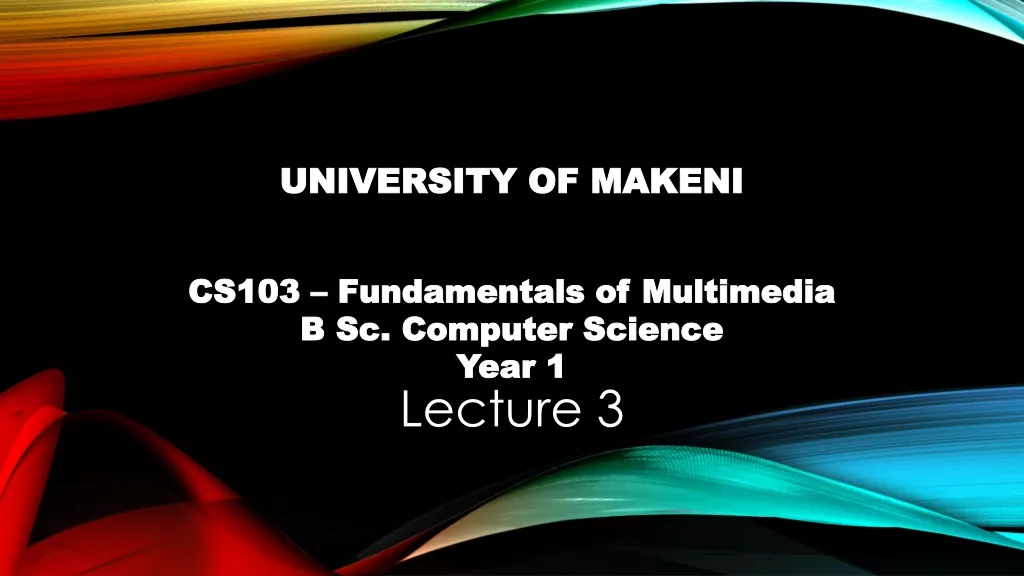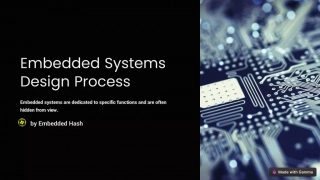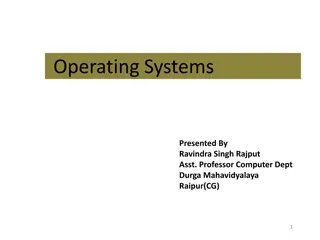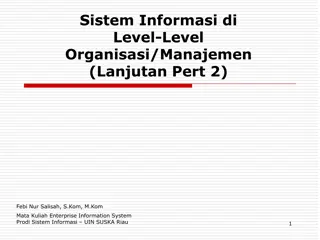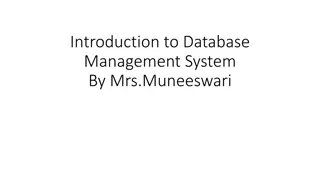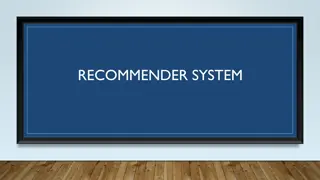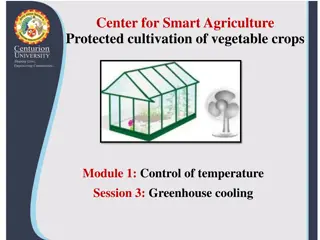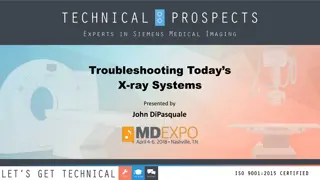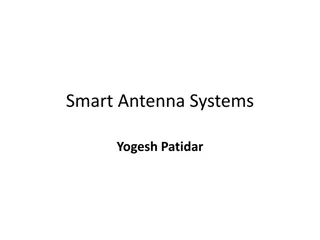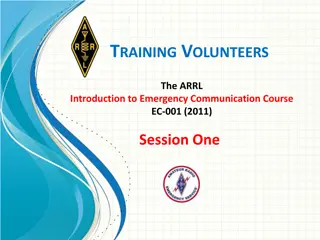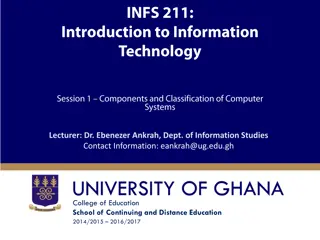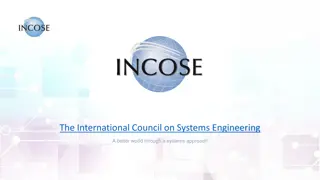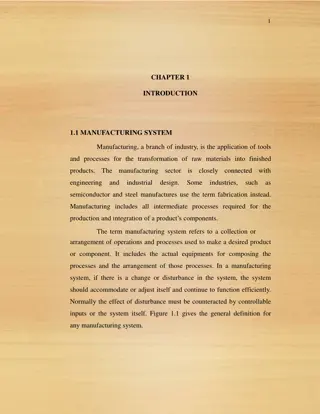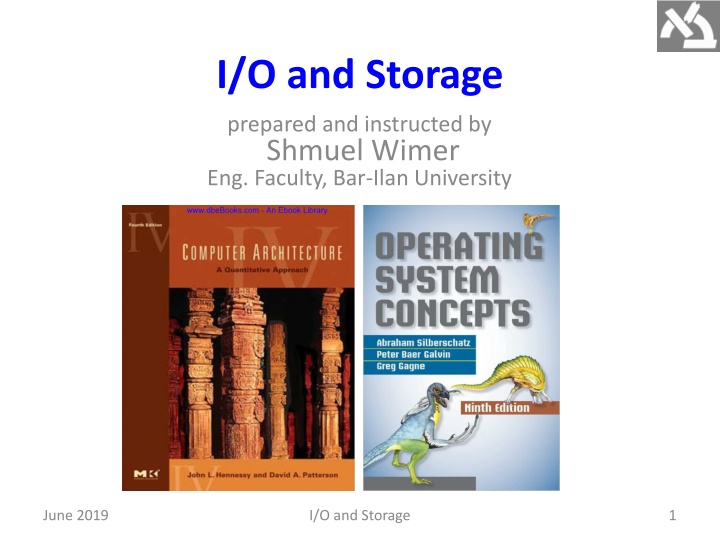
Computer I/O and Storage Systems
Explore the essential components of computer I/O and storage systems, including hardware elements, device communication, buses, controllers, and the role of device drivers in facilitating efficient data transfer. Gain insights into the intricate functioning of I/O devices and the critical interfaces between applications and the operating system. Discover how processors interact with device-control registers and execute I/O requests through mapped memory locations. Delve into the complexities of managing data transfers, caching, and control operations in computer systems.
Download Presentation

Please find below an Image/Link to download the presentation.
The content on the website is provided AS IS for your information and personal use only. It may not be sold, licensed, or shared on other websites without obtaining consent from the author. If you encounter any issues during the download, it is possible that the publisher has removed the file from their server.
You are allowed to download the files provided on this website for personal or commercial use, subject to the condition that they are used lawfully. All files are the property of their respective owners.
The content on the website is provided AS IS for your information and personal use only. It may not be sold, licensed, or shared on other websites without obtaining consent from the author.
E N D
Presentation Transcript
I/O and Storage prepared and instructed by Shmuel Wimer Eng. Faculty, Bar-Ilan University June 2019 I/O and Storage 1
Overview Two main jobs of a computer: I/O and processing. Controlling devices is major OS design concern, since I/O vary in function and speed (e.g. mouse, hard disk). I/O HW elements, such as ports, buses, and device controllers, accommodate a wide variety of I/O devices. To encapsulate the details and oddities of different devices, OS kernel uses device-driver modules. Device drivers allow uniform access I/O interface. System calls provide standard interface between the application and OS. June 2019 I/O and Storage 2
I/O Hardware The device communicates with the machine via port. Devices are connected by bus with well defined protocol specifying the messages that can be sent. Buses vary in their signaling methods, speed, throughput, and connection methods. PC bus called PCI bus connects the processor memory subsystem to fast devices. Expansion bus connects slow devices (keyboard, serial and USB ports). June 2019 I/O and Storage 3
PC bus structure. June 2019 I/O and Storage 4
Disks are connected on a Small Computer System Interface (SCSI) bus. Other buses are PCI Express (PCIe), with 16 GB/Sec, and Hyper Transport, with 25 GB/Sec throughput. Controller can be simple, implemented in single chip, or complex (e.g. SCSI) implemented as a separate board. SCSI controller contains processor, microcode and private memory. Devices may have their own built-in controllers, e.g. disk drive, implementing the disk side of the protocol. SCSI or Serial Advanced Technology Attachment (SATA). June 2019 I/O and Storage 5
It has microcode and processor doing many tasks, as bad-sector mapping, prefetching, buffering, and caching. The controller has registers for data and control, used by the processor to communicate with the controller. Special I/O instructions specify the transfer of a byte or word to an I/O port address. The I/O instruction triggers bus lines to select the proper device and to move bits into or out of a device register. Alternatively, the device controller can support memory- mapped I/O. June 2019 I/O and Storage 6
Device-control registers are mapped into the address space of the processor. CPU executes I/O requests by ordinary R/W instructions to mapped locations in physical memory. Graphics controller for instance has I/O ports for basic control operations, but has large memory mapped region for screen contents. The controller generates the screen image based on the contents of this memory. Writing millions bytes to the graphics memory is faster than issuing millions of I/O instructions. June 2019 I/O and Storage 7
I/O port has four registers: Data-in, read by the host to get input. Data-out, written by the host to send output. Status read by the host, indicating command completion, byte availability to be read from the data-in, device error occurrence. Control written by the host to start command, change device mode (e.g. full-duplex or half-duplex, enable parity check, select speed of serial port). Controller may have FIFO to expand data register capacity, to hold device or host data burst until receive is possible. June 2019 I/O and Storage 8
Polling 2 bits coordinate the producer consumer relationship between the controller and the host. Busy bit in status register indicates controller state, set when busy, clear when ready to accept next command. Command-ready bit in the command register signals host wishes, sets when a command is available for the controller to execute. The host writes output through a port, coordinating with the controller by handshaking as follows. 1. Host repeatedly reads busy bit until becomes clear. June 2019 I/O and Storage 9
2. Host sets write bit in the command registerand writes a byte into the data-out register. 3. Host sets command-ready bit. 4. Once controller notices that command-ready bit is set, it sets busy bit. 5. Controller reads the command register and sees the write command. It reads the data-out register to get the byte and does I/O to device. 6. Controller clears command-ready bit, clears error bit in the status register to indicate device I/O succeeded, and clears busy bit to indicate it is finished. June 2019 I/O and Storage 10
Polling loop is reasonable if controller device are fast, but if the wait is long, the host switches to another task. How, then, does it know when the controller has become idle? Polling is inefficient when attempted repeatedly yet rarely finds a device ready for service, while other useful CPU processing remains undone. It is more efficient that hardware controller notifies the CPU when device becomes ready for service. The HW enabling device notify the CPU is called interrupt. June 2019 I/O and Storage 11
Interrupts The CPU has a wire called the interrupt-request line sensed after executing every instruction. When detecting that controller has asserted a signal on the line, CPU state is saved. CPU jumps to the interrupt-handler routine at fixed address in memory. Interrupt handler determines cause of interrupt and performs necessary processing, and returns CPU state prior to the interrupt. June 2019 I/O and Storage 12
Interrupt-driven I/O cycle. June 2019 I/O and Storage 13
Modern OS, use more sophisticated interrupt-handling features. 1. Defer interrupt handling during critical processing. 2. Dispatch to proper interrupt handler without polling all devices to see which one raised the interrupt. 3. Support multilevel interrupts, allowing OS responding by interrupts priority. Above are provided by the CPU and by the interrupt controller hardware. CPUs have two interrupt request lines. June 2019 I/O and Storage 14
One is nonmaskable interrupt, reserved for events such as unrecoverable memory errors. Second is maskable, used by device controllers to request service, is turned off by CPU before executing critical instruction that must not be interrupted. Interrupt accepts an address (offset in interrupt vector) to selects interrupt-handling routine. Interrupts have priority levels, enabling CPU to defer low-priority interrupts without masking all, making high priority interrupt to preempt. June 2019 I/O and Storage 15
Intel Pentium processor event-vector. June 2019 I/O and Storage 16
Interrupts are used to handle exceptions (e.g. dividing by 0, access protected memory address, attempt execute non user mode instruction). Interrupts are also used for trap, used to issue system calls, calling the kernel. Trap has low priority compared to device. System call on behalf of application is less urgent than servicing device controller, before FIFO queue overflows and loses data. Threaded kernel is well suited to implement multiple interrupt priorities and enforce precedence. June 2019 I/O and Storage 17
Direct Memory Access Interrupts or polling are wasteful for transferring big amount of data between the disk and memory. Rather, memory-access (DMA) is used. special-purpose processor called direct- The CPU writes a DMA command block into memory, containing a pointer to transfer source, a pointer to transfer destination, and number of transferred bytes. The CPU writes the address of this command block to the DMA controller, then goes on with other work. June 2019 I/O and Storage 18
DMA transfer June 2019 I/O and Storage 19
The DMA places addresses on the bus to perform transfers without CPU intervention. DMA-disk handshaking is performed via a pair of DMA- request and DMA-acknowledge wires. Disk controller sets DMA-request when data is available for transfer. DMA controller seizes memory bus, placing address on memory-address wires, and setting DMA-acknowledge. Device controller receives DMA-acknowledge, transfers word of data to memory and clears the DMA-request. June 2019 I/O and Storage 20
When the entire transfer is finished, the DMA controller interrupts the CPU. DMA controller seize of memory bus prevents CPU momentary access to main memory (but not to cache), called cycle stealing. Although cycle stealing can slow down the CPU, offloading data-transfer work to a DMA improves the total system performance. June 2019 I/O and Storage 21
Disk Storage 2.5 orders of magnitude 5 orders of magnitude Density and access time improvement over 25 years June 2019 I/O and Storage 22
Bits Inch2) is constantly improved Areal density ( Areal density=Tracks Bits Inch Inch 1980-1988 29%/year, 1989-1996 60%/year (as DRAM), 1997-2003 100%/year, 2004-2006 30%/year. In 2006, the highest density in commercial products is 130 billion Bits Inch2. Cost/gigabyte dropped as fast as density increased, improved by 100,000 between 1983-2006. June 2019 I/O and Storage 23
The X100,000access time gap between disks and DRAM always challenged disk technology. That performance advantage costs 30 150 times more per gigabyte for DRAM. Bandwidth gap is more complex. A fast of 37GB disk, costing $150 in 2006 transferred 115 MB/sec. A 2 GB DRAM module, costing $300 in 2006 transferred 3200 MB/sec. DRAM module BW was X28 (3200 3.2 2 115), BW/GB was X500 300). 0.115 37), and BW/$ was X14 (28150 ( June 2019 I/O and Storage 24
Flash memory (SSD) may be an alternative. Nonvolatile with same BW as disks, but latency is 100 1000 faster and much smaller power. $/GB of flash is about the same as DRAM (X50 than disks), and endurance is a problem. Disks will remain viable for the foreseeable future, replacing the sector-track-cylinder model by serpentine model across a single surface. With microprocessor inside, disks offer higher-level intelligent interfaces, like ATA and SCSI. June 2019 I/O and Storage 25
Disk Power Diameter4.6 RPM2.8 Number of platters June 2019 I/O and Storage 26
June 2019 I/O and Storage 27
Disks include buffers to hold the data until the computer is ready to accept it. Caches are also included to avoid read accesses. Disks have a command queue allowing to decide the access order to maximize maintaining correct behavior. performance while Depth of 50 can double the number of I/Os per second of random I/Os due to better scheduling of accesses. Number of platters shrank from 12 to 4 or even 1. June 2019 I/O and Storage 28
June 2019 I/O and Storage 29
I/O and Queuing Theory Probabilistic nature of I/O suggests queuing theoryto calculate response time and throughput of I/O system. Processor makes I/O requests arriving the I/O device. The requests depart when the I/O device fulfills them. We focus on the long term, or steady state. June 2019 I/O and Storage 30
Simplifying assumptions: Multiple independent I/O request in equilibrium: input rate = output rate. Steady supply of tasks independent for how long they wait for service. Mean Mean number number of of tasks tasks in in system Arrival Arrival rate rate Mean Mean response system = = response time time Can be >1 since tasks services may overlap (few servers). I/O request departs by server completion. June 2019 I/O and Storage 31
1 ?server Average time to service a task. ?server= ?. ?queue Average time per task in the queue. ?system Average time per task in system (response time), ?system= ?server+ ?queue. Arrival rate ( ) tasks/second. Average number of arriving ?server Average number of tasks in service. ?server= ?server. June 2019 I/O and Storage 32
?queue Average length of queue. ?system Average number of tasks in system, ?system= ?server+ ?queue. Server utilization Average number of tasks per servers. Server utilization= ? ?. 0 ? 1, otherwise equilibrium is violated. June 2019 I/O and Storage 33
Example Suppose an I/O system with a single disk gets on average 50 I/O requests per second. Assume the average time for a disk to service an I/O request is 10msec. What is the utilization of the I/O system? Answer 10msec = 0.01sec, ? = 100. = 50 Server utilization= ?= 0.5. June 2019 I/O and Storage 34
The Exponential Distribution ? exponentially distributed with parameter > 0 ? ? = ? ? ? 0 ? < 0 pdf: 0 ? ? ? ?? = 1 ? ? ? 0 ? < 0 cdf: ? ? = 0 ? ? ?? =1 ? ? = mean: 2=1 Var ? = ? ?2 ? ? variance: 2 June 2019 I/O and Storage 35
? is memoryless if ? ? > ? + ?|? > ? = ? ? > ? ?,? > 0, or ? ? > ? + ? = ? ? > ? ? ? > ? Exponential distribution is memoryless since ? ?+?= ? ?? ? June 2019 I/O and Storage 36


